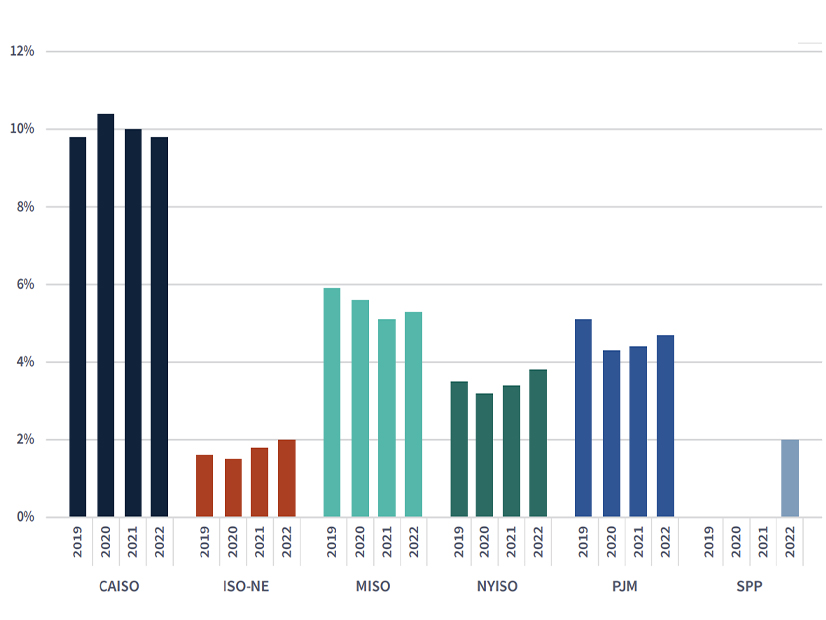Speakers at the ISO-NE Consumer Liaison Group (CLG) meeting March 6 stressed the importance of proactive efforts to unlock the potential of demand response and peak shifting, as electrification is projected to double New England’s peak loads in coming decades.
The CLG met in Portland for its first quarterly meeting of 2024 and featured discussions on the benefits of widescale load shifting, along with the barriers that prevent the realization of those benefits.
Andrew Landry, deputy public advocate for Maine, called demand response “an important tool that we need to take advantage of to the maximum extent.”
Landry cited ISO-NE’s projection of a 57-GW peak load in 2050, as well as the RTO’s finding that limiting this peak to 51 GW would save about $9 billion in avoided transmission upgrades.
“If we can find ways to reduce the demand, even with the amount of electrification that’s going on, it would reduce the need for transmission,” Landry said.
He highlighted FERC data showing demand response makes up a significantly lower percent of total installed capacity for ISO-NE compared to CAISO, MISO, NYISO and PJM.
Eric Johnson of ISO-NE echoed the importance of reducing demand but added that “there’s a lot of infrastructure challenges that need to be resolved.” He noted that the FERC data does not include the region’s significant energy efficiency gains. (Report: Many US Utilities not Delivering on Energy Efficiency.)
Jill Powers of CAISO presented to the CLG about load-shifting efforts in California, where demand response surpasses all other RTOs by percent of installed capacity. Powers said demand response programs have helped the state avoid rolling blackouts during grid stress events and emphasized the role of both in-market and out-of-market mechanisms to engage a wide range of customers.
“It’s not just at the wholesale level that we need to be collaborating” to unlock demand flexibility, Power said.
She outlined two out-of-market programs in California that incentivize demand reductions during peak hours: the Demand Side Grid Support Program and the Emergency Load Reduction Program. The programs are not administered by CAISO, but they do respond to real-time and day-ahead signals from CAISO.
“We believe that demand can provide responses similar to a flexible resource, helping to balance the grid,” she said.
The CLG also featured a panel of New England stakeholders, who focused on the role of ISO-NE in increasing demand response efforts within the region.
Doug Hurley, vice president of policy at Icetec Energy Services, stressed that peak demand reductions from one electricity customer on the grid provides benefits to all customers by reducing the clearing price, limiting emissions associated with peaker plants, and ultimately reducing the need for new transmission investments.
Hurley said the region needs to align state demand programs and retail rate design with optimal times to charge and discharge batteries — such as at night or midday when cheap solar power is available — to better balance load and reduce emissions.
He also called out ISO-NE’s compliance proposal for Order 2222 as a “missed opportunity” to increase the participation of flexible demand resources in its markets, saying the “compliance to date will not achieve any participation.” (See FERC Accepts ISO-NE Order 2222 Compliance Filing.)
Ian Burnes of Efficiency Maine Trust agreed with Hurley’s criticism of ISO-NE’s Order 2222 compliance and called on ISO-NE to help ease the barriers for small resources to participate as demand response resources.
“We have a lot of work to do here,” Burnes said. “It’s very, very difficult to aggregate lots of small assets and have them participate.”
Burnes added that significant investments in physical infrastructure to enable residential customers to receive and respond to incentives to shift their demand will be necessary.
“I do not want to trivialize that investment — it is going to be hard,” Burnes said. “I think that needs to be our focus.”


